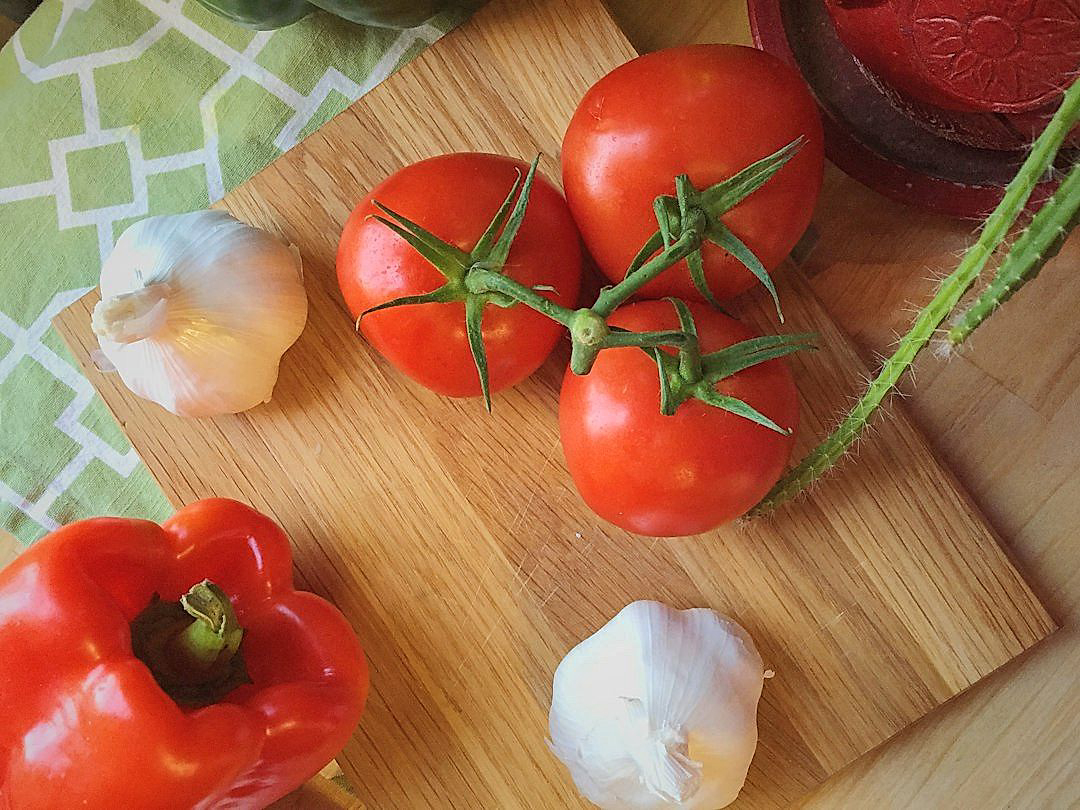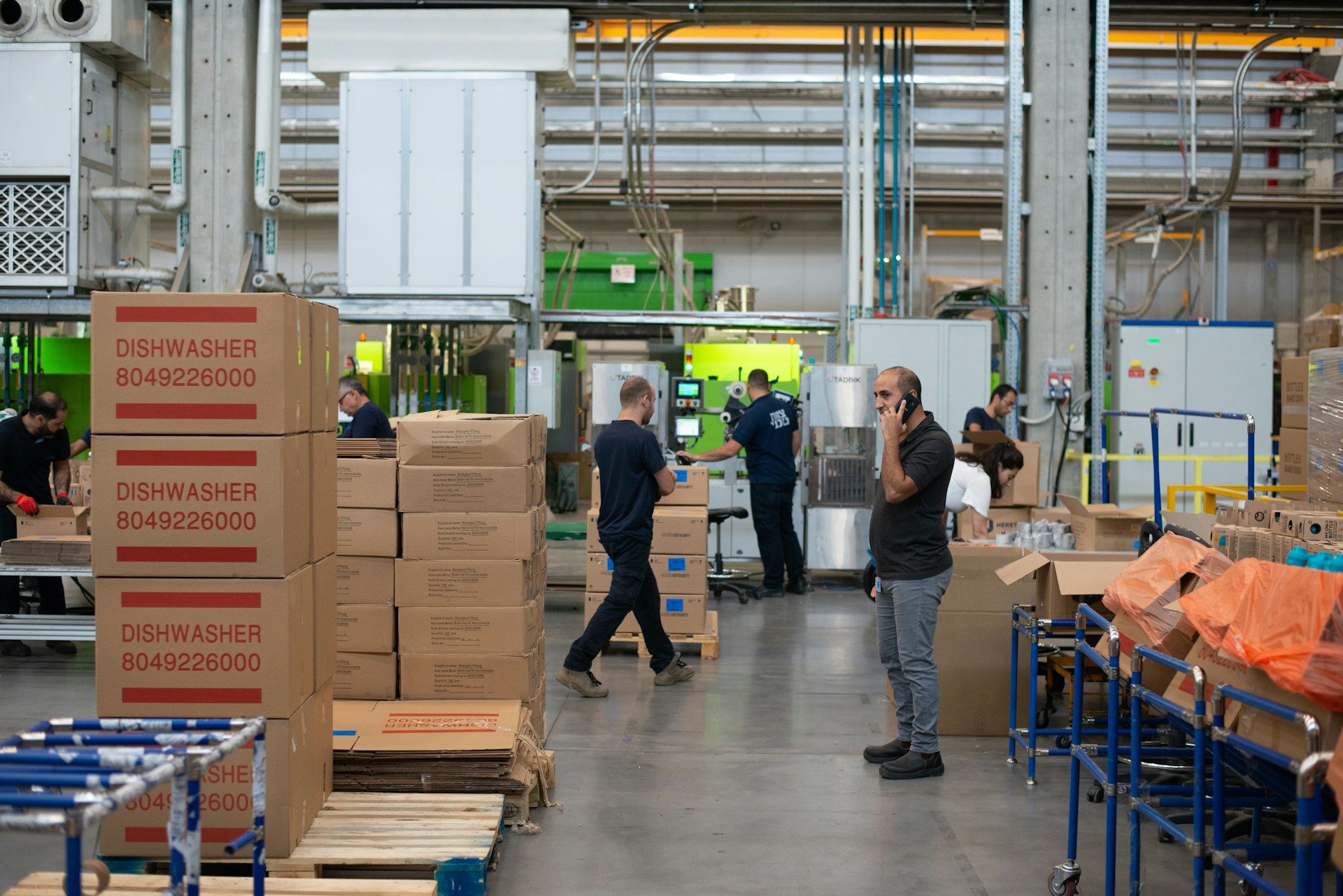Regulatory changes, emerging technologies, and environmental concerns are transforming the landscape of the fresh produce packaging industry.
This transformation is having a profound effect on how growers, suppliers, and retailers package, handle, and distribute fresh products.
Increased awareness about the environmental impact of packaging solutions demands sustainable, recyclable options.
Regulation compliance has become critical to businesses, steering innovation in the field.
As we delve into this topic, we will unravel the key regulatory mechanisms orchestrating these changes.
The directive is clear – adapt or perish.
Contents
- Packaging Regulations Shaping The Future Of Produce
- 1. Increase in Biodegradable Packaging Requirements
- 2. Stricter Labeling Accuracy Standards
- 3. Reduction in Single-Use Plastic Packaging.
- 4. Mandatory Use of Recycled Materials
- 5. Guidelines for Portion Control Packaging.
- 6. Zero-Waste Packaging Policies and Regulations.
- 7. Enhancements on Child-Safe Packaging Rules
- The Bottom Line
Packaging Regulations Shaping The Future Of Produce
1. Increase in Biodegradable Packaging Requirements
As our world continues to grapple with the effects of environmental pollution and waste, there has been a clear shift within industries to adapt and evolve their practices.
One of the industries making significant strides is the produce industry, which grapples with the task of safely and effectively packaging their products while also adhering to more stringent environmental standards.
Increasingly, the focus has turned towards the use of biodegradable packaging to help solve this issue.
Today, several countries and states worldwide are mandating the use of biodegradable packaging in specific sectors, and the produce industry is no exception.
The introduction of more stringent biodegradable packaging requirements is shaping the future of the industry, driving innovation, and pushing companies to think outside the box and adopt environmentally friendly practices.
Manufacturers are required to devise and implement ways to ensure their packaging can decompose and return to nature within a relatively short time after disposal, reducing its environmental impact.
This is not an easy transition, however, given that conventional plastic-based packaging has been a staple in the industry for decades due to its convenience, cost-effectiveness, and longevity.
However, with increased awareness about the harmful impact of non-biodegradable waste, these conventional practices are being challenged.
The current generation of consumers is more informed and environmentally conscious, pressuring companies to make ethical decisions, particularly regarding packaging choices.
With stricter regulations requiring companies to switch to biodegradable packaging, they will also need to establish clear timelines, objectives, and methods to ensure they meet these new standards.
These regulations are expected to promote innovation within the industry, as companies scramble to develop new forms of packaging that are both functional and eco-friendly.
Furthermore, these requirements present an opportunity for the industry to invest in and boost the biodegradable packaging market, which in turn benefits the global environment.
The transition to biodegradable packaging not only aligns with the global effort to reduce environmental pollution but also positions the produce industry as a leader in sustainable practices.
The industry’s commitment to sustainable packaging reflects its dedication to its consumers and to the global effort to combat environmental pollution.
It’s important to recognize that this increased emphasis on biodegradable packaging is not just about short-term compliance with regulations, but rather it represents a significant shift towards a more sustainable future in the produce industry.
2. Stricter Labeling Accuracy Standards
In the evolving world of produce packaging, one of the key aspects being targeted for improvement is the accuracy of labeling standards.
This drive is derived from a two-fold need: consumer demand for honesty and transparency, as well as the need to tackle issues of food waste and safety.
The principle behind this requirement is simple – consumers should be able to trust the labels on the products they buy, and these labels should adequately represent what’s inside the packaging.
Stricter labeling accuracy requirements are shaping the future of produce packaging by ensuring trust between consumers and producers, as well as promoting safety and reducing food waste.
Multiple oversight bodies worldwide are working towards implementing, enhancing and maintaining these standards.
This has led to the development of rules and regulations that insist on the precise representation of a product’s ingredients, origin, nutritional content and more.
The labels on packaging must also include any potential allergens that the product may contain, to protect sensitive consumers.
Any deviation from the truth in labeling can result in serious legal consequences for produce companies.
Such measures are not only to protect the consumer, but also to foster a sense of fair play and transparecy among producers by ensuring all rules are equitably enforced.
This standardization also makes it easier for retailers to stock and sell products, as they will have a clear understanding of the specifics of the products they are dealing with.
Beyond the informative aspect of labels, the environmental impact of the label itself must also be considered.
Biodegradable and environmentally friendly labels are becoming the norm, and companies are encouraged to move in this direction.
In conclusion, the future of produce packaging is being shaped by stricter labeling accuracy standards, promoting consumer trust and safety, enhancing fairness among producers, and reducing environmental impact.
These measures are expected to continue to evolve and adapt with the changing demands of consumers and the environment, ensuring the long-term sustainability and integrity of the produce industry.
In all, while the implementation and enforcement of stricter labeling accuracy regulations may present a challenge for the industry, the benefits far outweigh the potential difficulties.
3. Reduction in Single-Use Plastic Packaging.
Single-use plastic packaging constitutes a significant portion of total packaging waste.
While it has been convenient for consumers and producers alike, this practice contributes to growing environmental concerns.
Slowly, a change is being witnessed on the horizon where the use of single-use plastic packaging is braced by a wave of restrictions globally.
The push for decreasing the use of single-use plastics is undeniably one of the most robust packaging regulations shaping the future of produce.
This change has been driven largely by increasing awareness and comprehension about the adverse effects of the excessive use of single-use plastics, especially in terms of waste management and environmental degradation.
Forward-thinking companies are already pushing boundaries, exploring innovative ways and shifting towards using less plastic in their packaging or eliminating plastic altogether.
The regulatory landscape is becoming more stringent by the day, driving moves towards alternatives to single-use plastic packaging.
Packaging regulations rigorously underline the need for reusable, recyclable or compostable packaging on the part of both retailers and the suppliers.
New packaging designs are being developed to meet these regulations, harnessing innovative technologies and environmentally-friendly materials to decrease plastic use.
Further, the responsibility has also percolated to the customers who are increasingly expressing their preference for sustainable packaging practices.
This shift outlines the potential for packaging innovations that reduce the environmental footprint and caters to regulatory demands as well as changing consumer preferences.
Such innovations open up new markets for producers who follow environmentally sustainable packaging methods congruent with the emerging packaging regulations.
Over time, this could lead to significant reduction in single-use plastic packaging in the retail sector, particularly in food and beverage packaging.
These developing trends are indicative of a future that will ultimately see a significantly lesser dependency on single-use plastic packaging.
The direction that the packaging regulations are projected to take in the foreseeable future may help to sculpt an industry that operates under the principles of sustainability and minimal environmental harm.
4. Mandatory Use of Recycled Materials
As part of a wave of proactive measures being undertaken by global governments and corporations, the mandatory use of recycled materials in packaging is being implemented.
This way, the impact on the environment can be greatly reduced while promoting a circular economy.
Recycled materials such as glass, metal, paper, and plastic can be repurposed in inventive ways to create usable, effective, and safe packaging for produce.
For example, recycled glass bottles can be sterilized and reused for beverages, or paper and cardboard can be recycled into packaging boxes for various types of dry goods.
The recycled materials can function effectively in preserving the integrity and safety of the product; many times, they can hold up just as well as new packaging materials.
There is a misunderstanding that recycled materials could possibly compromise the quality or safety of the packaged produce, but this is a misconception that needs to be dispelled.
In fact, advanced and innovative recycling technologies are being developed and adopted to ensure that packaging made from recycled materials is of high quality and safe for use.
Not only do these measures encourage corporations to drive innovation and efficiency in their packaging operations, they also direct markets towards more sustainable practices.
Regulations for mandatory use of recycled materials allows for more waste to be repurposed for further use, instead of it being directly sent to our landfills.
This also reduces the need for extracting new raw materials, consequently reducing the carbon footprint that accompanies raw material extraction and processing.
The shift to mandatory use of recycled materials for packaging requires education and collaboration among manufacturers, governments, consumers, and waste management organizations.
For successful implementation, all the stakeholders in the process need full understanding of the importance of recycling and repurposing waste materials.
These regulations will also necessitate the encouragement of sustainable consumer behaviors, which will have a major influence on future packaging practices.
Government support for companies making an effort to incorporate these environmental measures, like tax incentives or subsidies, can be an excellent way to promote this transition.
Mandatory use of recycled materials in packaging is a forward-thinking strategy that undoubtedly forms an integral part of the future of the packaging industry.
5. Guidelines for Portion Control Packaging.
As we delve into the topic of Guidelines for Portion Control Packaging, it is essential to understand the implications for the packaging industry and how they are shaping the future.
Portion control packaging, in essence, refers to the provisions that dictate the size and quantity of a product that can be made available in a single packaging.
These guidelines were enacted primarily to address issues of food wastage, overconsumption, and consequently, obesity and other health issues linked to over-eating.
The industry, to adhere to these regulations, is required to minimise the amount of food packaged in a single-use container.
This shift towards portion control packaging necessitates a fundamental redesign of produce packaging strategies and often requires significant investment.
The careful allocation of resources, in line with regulations, ensures that portion control packaging becomes attainable and sustainable.
New packaging designs need to fiercely strike a balance between durability, safety, usability, and adherence to portion size.
Importantly, this direction in regulations provides opportunities for more innovative packaging designs to surface, potentially transforming the landscape of the packaging industry.
Moreover, the regulations compel companies to consider the environmental impact of their packaging choices, driving them towards more sustainable solutions.
It’s arresting to note that portion control packaging doesn’t just benefit consumers and the environment, but also helps the producers save costs in the long run.
Yet, the implementation of these guidelines is not without its challenges, inviting heavy criticism from some industrial quarters that argue against their practicability and cost-effectiveness.
As we continue to adapt to these guidelines, it’s evident that they are compelling the packaging industry to engage with a more efficient, economical, and environmental model of operation.
Portion control packaging regulations, while presenting significant challenges, undoubtedly offer the possibility of a more sustainable future for the packaging industry.
The potential this holds for a dramatic shift in consumption patterns in society is evident, reflecting a move towards a more conscientious and sustainable way of living.
Therefore, it can be gleaned that the emphasis on portion control packaging regulations is a defining moment in the future of produce, orchestration of future trends in the industry with a clear shift towards sustainability and responsibility.
6. Zero-Waste Packaging Policies and Regulations.
With an increasing call for eco-friendly packaging, zero-waste policies and regulations are influencing the future of produce significantly.
The introduction of zero-waste regulations and policies is fundamentally changing the way manufacturers package and sell products.
These policies and regulations are not only meant to eliminate waste but also encourage manufacturers to adopt alternative packaging materials which are biodegradable.
The shift towards zero-waste packaging policies and regulations is an effort in the right direction to mitigate harmful environmental impacts caused by traditional packaging methodologies.
An example is the ‘Zero Waste Act’ introduced in America, which provides grants to businesses and local communities to invest in recycling and composting infrastructure in order to help the move towards zero-waste.
These zero-waste policies require manufacturers to have a system in place not only for recycling, but also for packaging that significantly reduces the production waste.
In line with such regulations, manufacturers are exploring various packaging options like reusable containers, compostable wrapping, and bulk bins.
These new standards offer consumers an opportunity to reduce their carbon footprint and make ethical buying choices.
However, the transition to zero-waste packaging isn’t met without challenges.
For instance, the upfront costs of initiating environmentally friendly packaging processes can be higher compared to the traditional methods.
But, businesses have to be creative and innovative to overcome the initial barriers and fully embrace these regulations.
In the long run, adopting zero-waste packaging helps increase brand loyalty among consumers who are increasingly becoming environmentally conscious.
Moreover, this paves the way for creating a circular economy where waste is minimized and resources are used in a more sustainable manner.
Though these regulations and policies are still relatively new, they are significantly impacting product packaging strategies and will continue to do so in the near future.
With the trend towards sustainability gaining momentum and becoming a standard, the evolution of packaging towards zero-waste will become an imperative measure for survival in the competitive market.
7. Enhancements on Child-Safe Packaging Rules
Within the scope of packaging regulations shaping the future of produce, it is of utmost importance to consider the implemented and forthcoming enhancements on child-safe packaging rules.
The safety of children and how they interact with packaging continues to be a central topic in many discussions about packaging regulations.
It is an issue so prevalent that it can no longer just be tossed aside or regarded as something of less importance.
In many parts of the world, legislations are being solidified to enshrine the safety provided by child-resistant packaging (CRP).
CRP’s are specifically designed to reduce the risk of children ingesting hazardous substances.
This is achieved by creating packaging solutions which are difficult for children to open or gain access to the contents within.
Furthermore, these packaging solutions must still stay within the bounds of being readily accessible to adults.
It’s not just about the implementation of child-resistant features, but the strategic thought process that goes into the overall design of the packaging.
In essence, packaging should target to be intuitive for adults, yet perplexing for kids, striking the right balance between accessibility and safety.
Safeguarding children from the potential harms of packaging doesn’t stop at physical barriers but extends to the use of warnings and labeling.
This is of particular relevance with packaging in the produce sector, where risks from mistaken consumption of items like hot pepper, certain types of mushrooms or even concentrated fruit packs can come into play.
The incorporation of clear, child-appropriate warning labels and symbols, whose meanings are universally understood, is a noticeable trend.
Moreover, the future might bring more stringent guidelines for creating such labels, assuring the highest level of comprehensibility and visibility.
The evolution of child-safe packaging regulations not only enhances safety but can also inspire innovation in packaging design and functionality.
In conclusion, the future of child-safe packaging rules promises a landscape where the safety of our youngest ones is considered a high priority.
As these regulations evolve, so must the produce industry to create a safer and healthier future for all consumers, particularly for children.
The Bottom Line
The worldwide movement towards sustainability and environmental conservation is undeniably influencing policies and regulations within the packaging industry.
The increased requirements for biodegradable packaging, alongside the reduction in single-use plastic packaging, signal a concerted effort to reduce environmental degradation caused by non-degradable waste.
Crystallizing the significance of using recycled materials and implementing portion control packaging also indicates an industry-wide shift towards eco-friendly practices.
In light of this, the imposition of zero-waste packaging policies is a considerable step in the right direction, mirroring the global aim of safeguarding our environment for future generations.
Stricter labeling accuracy standards and the enhancements of child-safe packaging rules are not just regulatory measures, they also demonstrate amplified consumer consciousness about product safety and information.
Indeed, the landscape of the packaging industry is evolving significantly and advancing towards a future that bodes well for both consumers and the environment.




